|
I just thought that I would write about nothing in particular about SE Asia.
In the village teenagers were like any other teenagers. In the village, everyone knows where you are at all times. The plumbing is backwards. For example in the shower, you can turn it to cold but it really comes out hot. Sleeping in hard beds isn’t very comfortable and the pillows aren’t as comfortable as you might imagine. A lot of the food in SE Asia, especially in Cambodia is made with lemongrass. The Laoation food is spicy but not too hot. Sometimes the power goes out. Elephants aren’t that common in cities but we saw one in Phnom Penh and it was just trucking down the street in front of our hotel. Boy that was cool and it a little bit scary.
0 Comments
Exotic locations such as Vietnam conjure up images of beaches and islands. Although we have been in some pretty exotic places we have had very little beach time. Phu Quoc Island is our last major stop in Vietnam and only the second time we are staying at the beach. We have discovered that perhaps it has all been for the best that we didn’t plan a lot of time at resorts.
This trip has been all about discovering ourselves; like one long self-directed family counseling session. One of our discoveries is that we are not really a beach family or at least not a beach resort family. Not that we don’t like the beach, but it is probably more accurate to say that we like seeing the beach and walking on the beach but not lying on it. I prefer the beach in the early morning and in the late afternoon, but not so much in the heat of the day. Other than to catch a little sun, none of us would spend hours playing at the beach or reading. To some degree we all have problems sitting still and would rather be doing something active. I prefer rugged undeveloped beaches with few or no tourists. Little pockets of delight that show up in small villages, wedged between rock cliffs or behind public bathrooms at roadside bus stops. Accidental beaches that have been ignored because their access is poor, location is less than ideal or they are too small. Not that there is anything wrong with the miles of perfect sand beaches dotted with grass huts at resort areas like Phu Quoc Island, but sometimes they give you pause to think. In some ways spending some time in a small village and at an orphanage in Vietnam has ruined us for resort life. We have met and stayed with real Vietnamese people. Now we see their individual faces not just their collective distinctness from us. I look into their eyes and smile at them now, instead of just looking at what they are selling. I know where they live. I know that their lives are very different from ours, but that at our core we are all the same. At times on this trip I have gone for days without seeing other foreigners, but resorts are odd places where westerners congregate. We look so big, white and scantily clad compared to the Vietnamese. I notice that the Vietnamese work very long days in the sun at the resort, doing laundry, cleaning rooms, giving massages and selling fruit on the beach while I relax and enjoy myself. I feel odd sometimes walking around in my swimsuit and I see them avert their gaze. They smile appreciatively at me when I am fully clothed and wearing my cone sun hat on the beach. Sometimes they point to their own hats and say “same same!”. I know that resorts bring money and money brings jobs, education and development. The beauty of this tropical place is indisputable and the climate along with the beaches are an asset to be exploited. But I have also seen places where Vietnamese people have been relocated from their homes on the shoreline so that resorts can be built. Places where cemeteries have been uprooted and moved to the mountains so a golf course could be built. You can move the people (dead and alive) but you can not help but lose their story. The story is attached to the place. Something is lost forever. I watch the sunset and I wonder about my self indulgence ... Truc assured us that her village in the Mekong Delta of Vietnam was so small that there wouldn’t be any access to the internet. But two internet cafes had been set up since her last visit several years before. Our experiences in the village caused us to ponder the potential of internet technology.
For most people in the village, their only access to the internet is at an internet cafe. Although a few homes have internet, computers are not the household item they are in the west. But demand for internet access is increasing and internet cafes are everywhere is SE Asia. This was helpful for keeping in touch while we were away, although the service is often slow and sometimes unreliable. The internet cafes in the village are used predominantly by young people to play on-line games and almost no one has an email account. Makes sense since it is closer to walk to your friends house or faster to phone than go to the internet cafe on the edge of the village to send an email. Dave helped a few people set up email accounts but his would be the only name in their contact list. To his surprise he had the explain the concept of a password to those who are not on-line gamers. Not only do most people not use the internet but there are no banking machines in the village, the other place where a password is required. Some parents were reluctant to allow their children to have an email account or use the internet cafe. We had to remember that if someone rolled into town and wanted to introduce our kids to a technology that we had no experience with, we might be reluctant as well. And just as we have concerns about how much time Devin spends on line, some of the teenagers who are frequent patrons of the internet cafes were being questioned by their parents about their whereabouts the evening before. We didn’t have to understand Vietnamese to get the drift of those conversations as the tone of voice and body language were clear. The fact that it costs to use the internet cafe was undoubtedly viewed as a waste of money by some of the parents. In spite of the potential for misuse the internet can be a very positive and powerful tool. The internet is opening up a whole new world of possibilities for one young English teacher in the village. As with many Vietnamese, his command of written English was very good, but because he had never conversed with a native English speaker, his pronunciation was difficult to understand and he had trouble understanding us. Dave took him to the internet cafe and introduced him to several on-line resources to improve his English. The owners of the internet cafe saw what was happening with Dave and the teacher and refused payment for the two hour session. After Dave set up a Skype for Truc’s aunt, several phone calls went back and forth between Canada and the village in order to arrange a time for an on-line session. The relatives in the village seemed a little hesitant but they jumped right in as soon as they saw Truc on the computer screen. The session lasted for nearly two hours. It was a thrill for us to be present as the Vietnamese and Canadian parts of this extended family were connected electronically. I had to choke back tears a few times. When the Skypeing was over, Truc’s aunt who hadn’t spoken a word of English the entire week, turned to Dave and said “thank you”. “You think there’s not a lot going on ... look closer baby you’re so wrong.” Like Dog River, Saskatchewan and many other small communities around the world, it looks like there is nothing going on in the small village in the Mekong Delta, where we spent a week during our trip to Vietnam. From the highway, the village looks like a wide spot with a cluster of houses.
This is the birthplace of Truc Le, one of Dave’s teaching colleagues in Calgary. As a child, Truc and her family braved many hardships to leave Vietnam as “boat people” and risked everything for the chance of a better life in Canada. When they learned of our trip to Vietnam, Truc and her parents arranged for us to spend a week in their village. Our excuse was to teach English and although we did some of that, the lasting benefit will come from the the bridges of friendship and mutual appreciation that were forged. We spent an amazing week in the village and we can not do justice to the experience in this blog. So we will summarize our experiences of the week and share the details in person. Also check out the pictures in our picture gallery. What follows is list of things we did that week: We came to the village from Saigon in an SUV containing 8 people, all of our gear plus two computers. We visited the police station three times. We slept under mosquito nets. We spent each evening with a group of teenagers practicing their English. We had cold showers all week. We visited the beach once. We saw a ship being built. We stopped at the market to buy duck food. We saw ponds where shrimp grow and others where sea salt is harvested. We saw trenches for telephone lines being dug by hand. Grandpa and Dave sat outside and drank many beers together, despite the fact that they don’t speak each others language. We taught an English class at the high school. We watched someone scrape the coconut out of the shell. We went to the local elementary school but were “uninvited” for our visit the next day because the “paperwork” was not in place. We ate chicken intestine, frog, duck, shrimp the size of small lobsters and deep fried flowers stuffed with minced pork. We did laundry in the courtyard by hand. We watched a boy climb a tree and chop down a cluster of coconuts. We found out that everyone in the village knew where we were at all times. Dave set up an email account for one of the high school teachers. We took the local bus twice. Dave drank rice vodka. Laverne took her first motorcycle ride since childhood. We watched rice being harvested. Children from the local elementary school spent afternoons with Kasenya and Lacey, learning English and singing songs. We had coffee and drinks at a local cafe. Realizing that we don’t speak Vietnamese, a woman at the cafe gave us her daughter’s phone numbers in case we had problems. We watched ducks being herded. We discovered the internet cafe. The police came to the house where we were staying and were invited to stay for supper. Devin had his picture taken with several teenage girls. We met four English teachers, none of whom are native speakers. We saw rice being dried in the courtyard. We found that grandmothers all over the world are the same. We were given cone hats. Little kids mobbed us in the market yelling “hello, hello’. We were fed mountains of food. We put the Vietnamese branch of the family together with the Canadian branch of the family via Skype. We met and spoke English with many people on an impromptu basis. We visited the market in a nearby town. We received an invitation to spend a month next time. Our week in the village was so much like our frequent visits to Saskatchewan. Only the location was different. The people are basically the same: self sufficient and generous to a fault. Everyone did what they could to make us comfortable and we made due with what was available. We slept on the floor when all the beds were full. People came to the house to see us and also invited us to their homes. We ate too much. Grandma squeezed us and Grandpa offered us beer. We were sad to leave. Everyone in the village welcomed us warmly and we left feeling certain we will return ... Usually when we travel we stay in places with cooking facilities so that we can do our own cooking. This has not been feasible in SE Asia because we have stayed mostly in hotels. Even finding cooking ingredients can be a problem as grocery stores are few and far between. The ones that we have found carry a small selection of packaged items and an even smaller selection of fresh produce and meat. Most people buy their food in the market.
“Buy local” isn’t just a slogan in SE Asia, it is a necessity. A poor country can not afford imported items. Refrigeration is expensive and a luxury. So people shop daily and eat what is fresh and available in the market. When we find food in the market, sometimes we don’t know what it is, sometimes we know what it is but don’t know what to do with it and sometimes we are reluctant to eat meat and fish that have been outside in a hot climate most of the day. Make no mistake, we know very well that what we are eating in restaurants is coming from the same market. Eating in restaurants takes away the stress of preparing food but adds its own stresses. Selecting a restaurant was a bit of an issue at the beginning of the trip. In most of the places we have been, restaurants are plentiful and our kids will eat almost anything. But we often found ourselves arguing about which restaurant to eat at so we developed a system whereby each of us takes a turn picking the restaurant. Kasenya suggested we do this from tallest to shortest, but the order changed part way through the trip when we discovered that Devin is now taller than Dave. We typically only eat two meals a day, plus snacks, which minimizes the time and hassle of eating as well. Breakfast is the most problematic meal of the day. People in SE Asia tend to eat noodle soup (pho) for breakfast. We have done this a few times and the soups are amazingly good, but its not likely something we will make a habit of. Some restaurants cater to Western tastes and offer a breakfast menu with omelettes and baguettes. Breakfast cereal is unheard of and milk is only available in UHT (tetra pack or bag) form even though it referred to as “fresh” milk. Cheese usually means Laughing Cow cream cheese. Sweetened condensed milk is available everywhere. When you order Vietnamese coffee you get a glass of very strong coffee with about an inch of sweetened condensed milk in the bottom. Tea can be served this way as well, but if you don’t order “Lipton” tea specifically, you will get Vietnamese tea which is a type of green tea and never has milk added. In many cases people have a restaurant in the front of their property and live in the back. Sometimes this simply means that they put a few Rubbermaid chairs and tables out on the sidewalk every day. Often it is the same group of locals that gathers to eat. We have seen a few restaurant kitchens, usually on our way to the bathroom, and it is amazing what can be done with a couple of burners a sink and a counter top. As with most North American restaurants, the kitchens are not that clean. Dishes are often washed on the sidewalk in front of the restaurant with cold water. But soap is never spared and dishes are meticulously scrubbed. At the beginning of the trip we were quite careful about adhering to common travel advice: don’t eat fresh vegetables or have drinks with ice. We still drink only bottled water, but have eaten anything and everything. We often eat at food stalls or buy food from mobile vendors. We are very adventuresome eaters and expected to be sick at least once because of the food but so far this hasn’t happened. We were also certain to get vaccinated against food borne diseases. Menus are a bit of an issue in SE Asia. Most have some English on them and sometimes there is a Vietnamese menu and a separate English menu. In this case what is on offer is not the same. Typos in menus are rampant. We have seen “hambuggers” and “streaks” on a few menus. Also the same item may be completely different at two different restaurants. You never know if rice with chicken means the rice and chicken are separate or mixed. All of this adds to the adventure. The oddest restaurant scene we encountered was in Yuanyang China, where we were eating our meal at a table near the front of a restaurant. A young woman came from the back with a chicken and started plucking it right in front of us where the dishes are done. No doubt about the freshness of the chicken on that menu. Hello Hobo family.
Something obviously was wrong with my left front wheel. We soon made the discovery that one of my bearings was gone so my Mom, my Dad and I started to go out to the shops and ask if they had any bearings. None of the shops in Luang Prabang (Laos) had bearings that were the right size. However they did have wrenches to look at it and confirm that our speculation was right that it was the bearing. We didn’t find anything in Laos but my loving father did find a couple of wrenches to buy so that he could do it himself when we had found the bearings.
My wheelchair is like my legs. Therefore I deserve the right to have some control over my wheelchair. I was feeling mad and sad about my wheelchair being broken. I was feeling nervous about Dad fixing it because I thought that he could make it worse and then have to replace the whole thing. In the end my loving father was able to fix my wheelchair but he did it secretly because he knew that I was feeling really anxious about that whole situation. “What’s the difference between the express bus and the VIP bus?” we ask. “Same same”, comes the answer. Well except for the fact that the express bus has no windshield wipers, is air-conditioned by driving with the door open and does not include lunch, but no one tells you that! “Same same” is a common saying in SE Asia and a bit of a joke amoungst travelers but locals recognize the humour of it as well. The saying has become available at almost every T-shirt shop. These two T-shirts that I bought at the market are the “same same” size but only one fits.
In some places like Hoi An, its always “Happy Hour”. Someone will walk up to you at a coffee shop in the morning trying to sell you a newspaper. Its odd enough that street vendors will approach a customer in a cafe but if you say no to the newspaper, they will say “happy hour, half price”. Doesn’t matter that the paper is in Vietnamese and we don’t speak or read the language. Walking in the market and through the streets its happy hour all day! “Where you from?” sounds innocent enough and sometimes they really mean it. But often it is an opener for selling you something or touting you to a restaurant. Its kind of sad because some people are genuinely just curious about where you are from but you can never really be sure. So with time we have become more callous to that question. “Madame, motobike?” is almost a mantra in SE Asia. Bicycles are becoming fewer as more people can afford motorbikes. Almost everyone wants to give you a ride, for a fee of course. When I am pushing Kasenya in her wheelchair I am always tempted to take them up on it. I have seen three butchered hogs on the back of a motorbike as well as furniture of all descriptions including a fridge. Whole families can get onto a motorbike. I have seen as many as five people on one. Physically disabled children get to school by being sandwiched between their two parents on a motorbike. So when they say “Madame, motobike?” to a woman walking with a child using a wheelchair I don’t doubt the sincerity of the offer. One of the most simple yet confusing decisions that one must make when going on any trip is deciding where to stay, especially when making that decision on a bus or sitting in a cafe. Throw in the fact that we have a child in a wheelchair (who is sixty pounds, which is hard to carry up and down stairs twice a day) and you would have many people in a tailspin. Thankfully after a few months on the road we have developed somewhat of a system to decide were to stay.
• STEP 1- Criteria for accommodations: Centrally located, wheelchair accessible (on ground level or has a lift), Price, Availability of suitable rooms, Air conditioning, internet (if possible). • STEP 2- Do some research, often times using the internet or looking in the guidebook. • STEP 3a- If a suitable place can be found through our research, and it seems to match our criteria then we will book ahead if possible. Often times we will try to book ahead in larger centers because it is difficult to just wander around and find a place. • STEP 3b- If we can’t find a good place to stay in our research, “fly by the seat of your pants” and find a spot to stay once we have arrived at your destination. It is best however to have an idea of were you want to stay so that you can get a taxi to take you to an area where there is a hotel cluster. This may not sound important but often times in spots were buses unload, or train stations and airports, Touts will try to get you to their hotel, which can get frantic and can result in poor choices. However once you have left those high pressure areas you can scout out hotels in relative ease. If you have children like us, we let them watch the bags and have a drink at a restaurant so that we are not taking all of our bags with us when we are checking out hotels. • STEP 4- Enjoy your accommodation, cause you’ll be doing it all over again in a few days! Notes by Laverne We expected to stay in a lot more hostels because of the services (kitchens, common areas and English speaking staff who can arrange onward travel) that they provide as well as the fact that they are usually in central locations but lower priced than comparable hotels. They also often have family rooms which is nice because then all of us can stay in the same room. Otherwise we usually need 2 hotel rooms. However most hostels do not have lifts so we find that hotels are turning out to be more suitable to our needs. Some of the hotels we have stayed in are small family run operations, which means the family also lives at the hotel. These are almost always narrow tall buildings. The front of the ground floor is a lobby while the back is a kitchen. Sometimes the family will have a restaurant in the front lobby as well. At the end of the day, everyone gathers at the hotel. In most cases, if you come down to the lobby at night, you will see the entire extended family asleep on their mats, on the lobby floor. Thanks to Lorraine for asking how we arrange our accommodations. Although it was one of the most spectacular road trips that we have taken in Southeast Asia, even the scenery on the bus trip between Luang Prabang and Vang Vieng could not distract me from the fact that I was holding a plastic bag full of my own warm stomach contents. Having done pretty well on a couple of previous busses and trains, I was hopeful that motion sickness wouldn’t be an issue but the road was just too much for me. The road wound relentlessly through the mountains but that wasn’t the only interesting part of the trip.
For starters the trip was supposed to take 3 hours, but we have learned that when you are given a time frame, it is the absolute minimum time it will take under ideal conditions. And of course, conditions are never ideal as there is always livestock on the road as well as places where the road has been washed out by a landslide. So the trip took about 5 hours. Halfway through the trip the bus driver pulled over at a wide spot, opened the door and yelled “toilet”. Feeling both ill and the need to go to the bathroom, I dashed off the bus and start running down the path. I went for quite a ways before the path began to narrow and I realized that there was no actual toilet. I was more than happy to use the great outdoors because I was not sure if my stomach could handle an actual SE Asian toilet at this point. Then I remembered that people are still injured every year by land mines in Laos and tourists are warned not to leave the path. Having relieved both my need to pee and to puke, I felt a bit better and started to look around. I was overwhelmed by the beauty of this place that I had just desecrated. In one direction a limestone cliff towered above me while I had a view of the mountains in the opposite direction. The path just a head of me lead to a rice field with an incredible view of the valley below. The story of the trip didn’t end there. Shortly after getting back on the bus from the toilet stop, it began to rain. There was a considerable lag before I realized that the bus driver wasn’t turning on the windshield wipers. The wiper arms had no blades. Although we were on an express bus, it is run by the Laos government which is very poor. Laos is regularly a recipient of aid from China, Korea and Japan. It was formerly supported by the USSR. A doctor that we met told us that the Chinese built a hospital in Luang Prabang, but that in the rainy season it was very hard to get to because the Laos government did not have the money to build a road. In addition to the driver most buses in SE Asia have a driver’s assistant. That person collects tickets and helps with luggage. On our bus the assistant was obviously training to be a driver. On one flat straight spot in the road, the driver and assistant traded spots, WITHOUT stopping the bus. he road to Vang Vieng was a memorable part of our journey. One that we hope to not repeat! |
Bissky Dziadyk FamilyTravelling the world as a family since 2008. In September 2008 our family embarked on a four month journey through South East Asia. Traveling with a child who uses a wheelchair presented its challenges, but following the Mekong River through China, Laos, Cambodia and Vietnam with a wheelchair was truly an adventure.
When we move beyond our fears and embrace our dreams, the Universe has an odd way of not only supporting us but giving us more opportunities than we ever imagined. Embarking on a journey with an open heart we can not help but be changed forever by the experience. Indeed it would be a waste to return untouched in the spiritual realm. September: China (Beijing, Xi’an,Kunming, Yuanyang) October: Northern Vietnam (Hanoi, Halong Bay) and Laos (Luang Prabang, Vang Vieng, Vientiane) November: Southern Vietnam (Hue, Ho Chi Minh City, Mekong Delta) December: Cambodia (Phnom Penh, Siem Reap, Battambang, Kampot and Sihanoukville). Archives
April 2020
Categories |
NO ORDINARY FAMILY, NO ORDINARY LIFE, NO ORDINARY JOURNEY
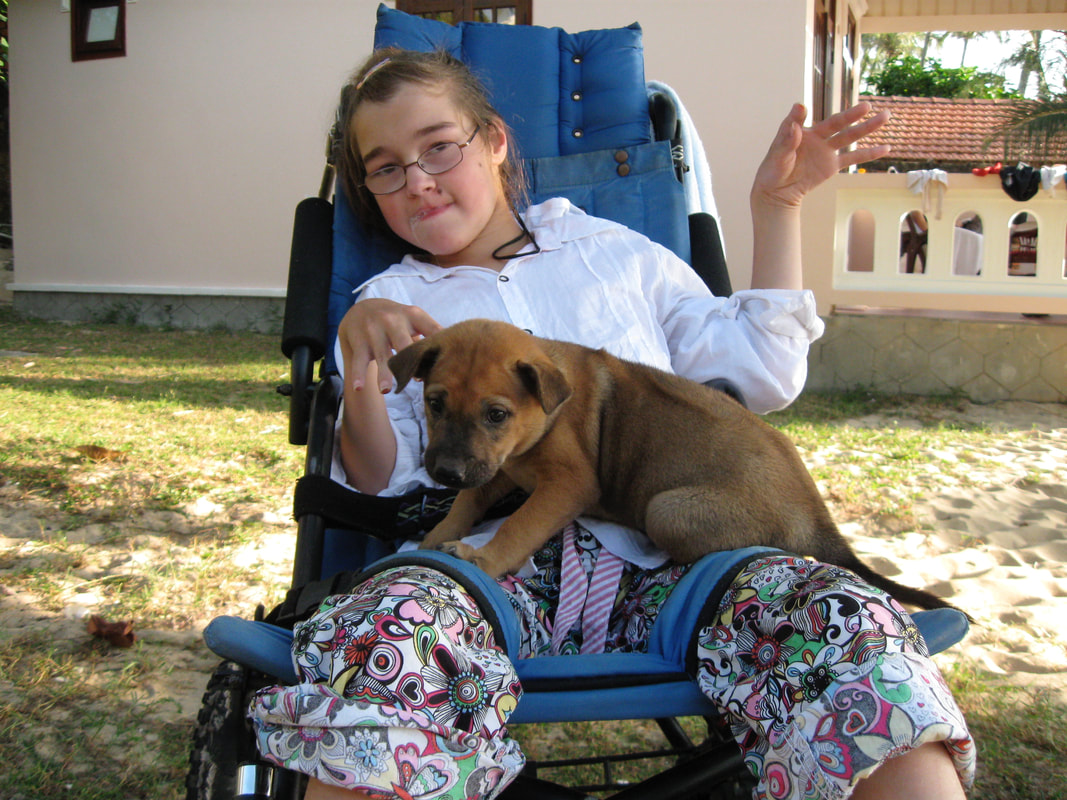
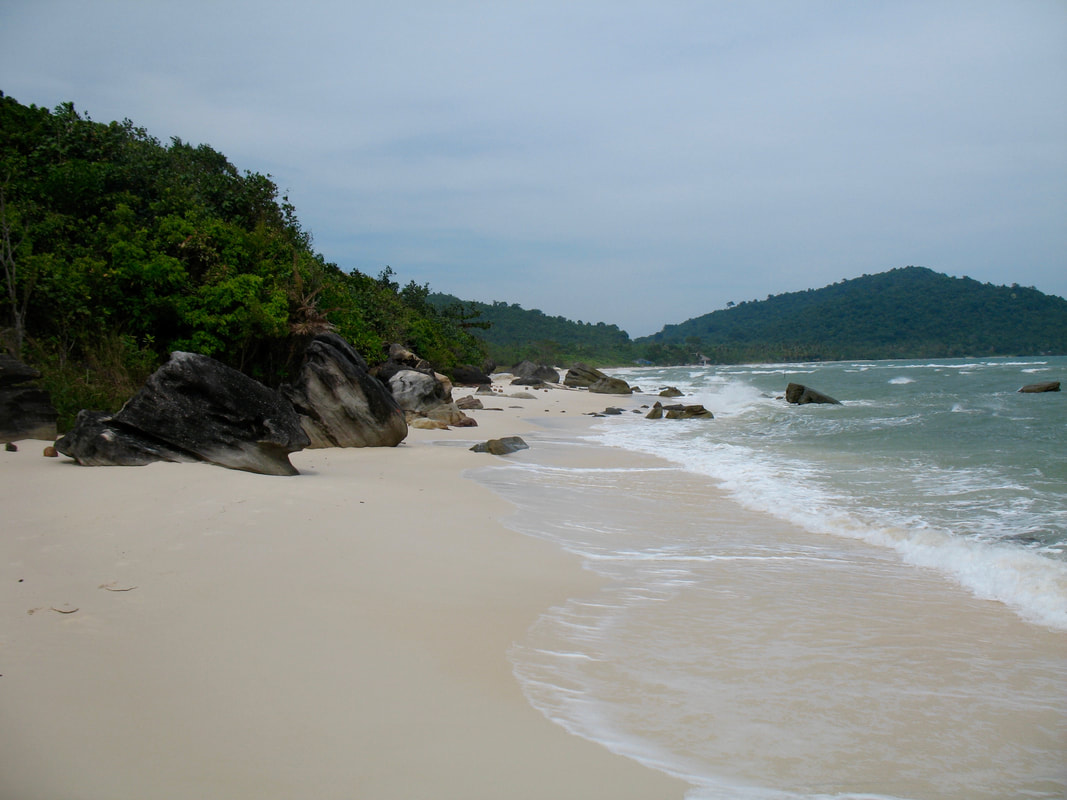
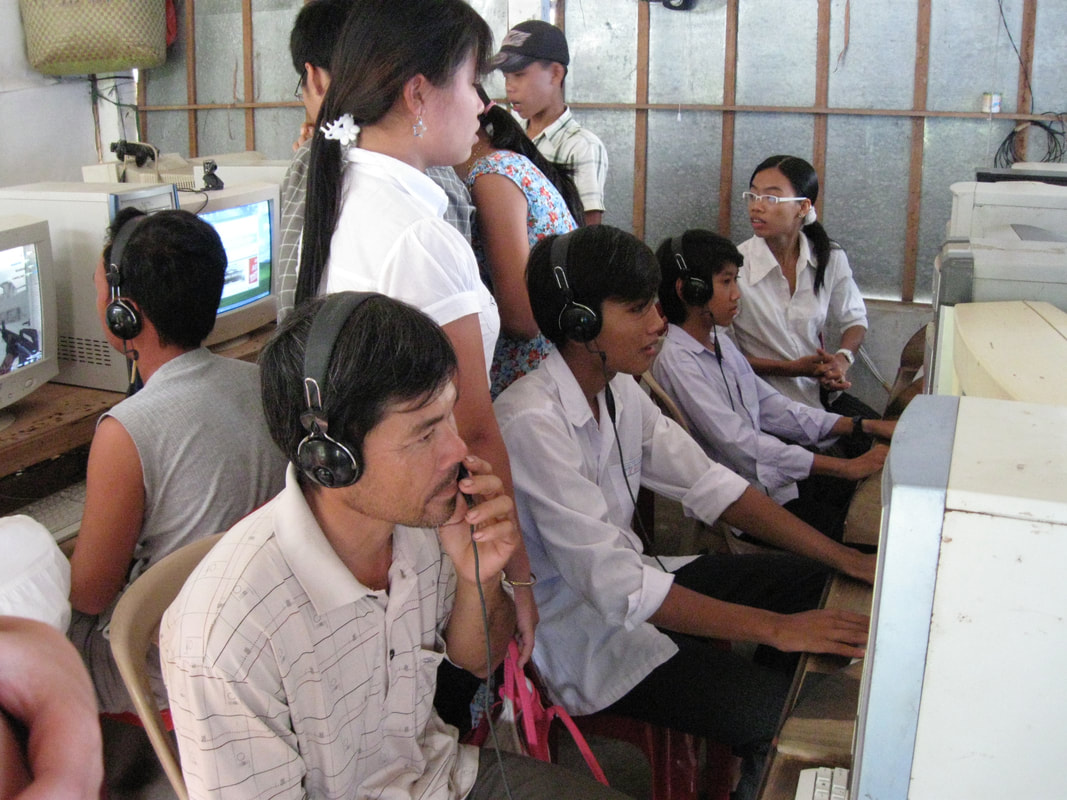
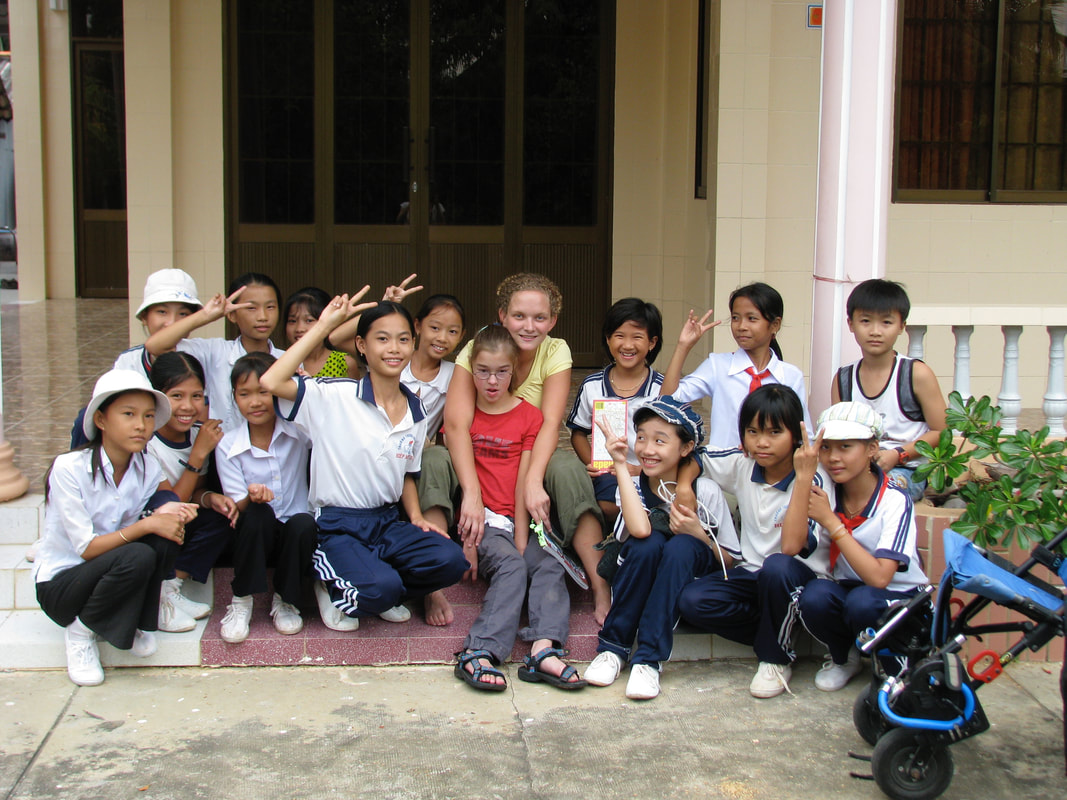
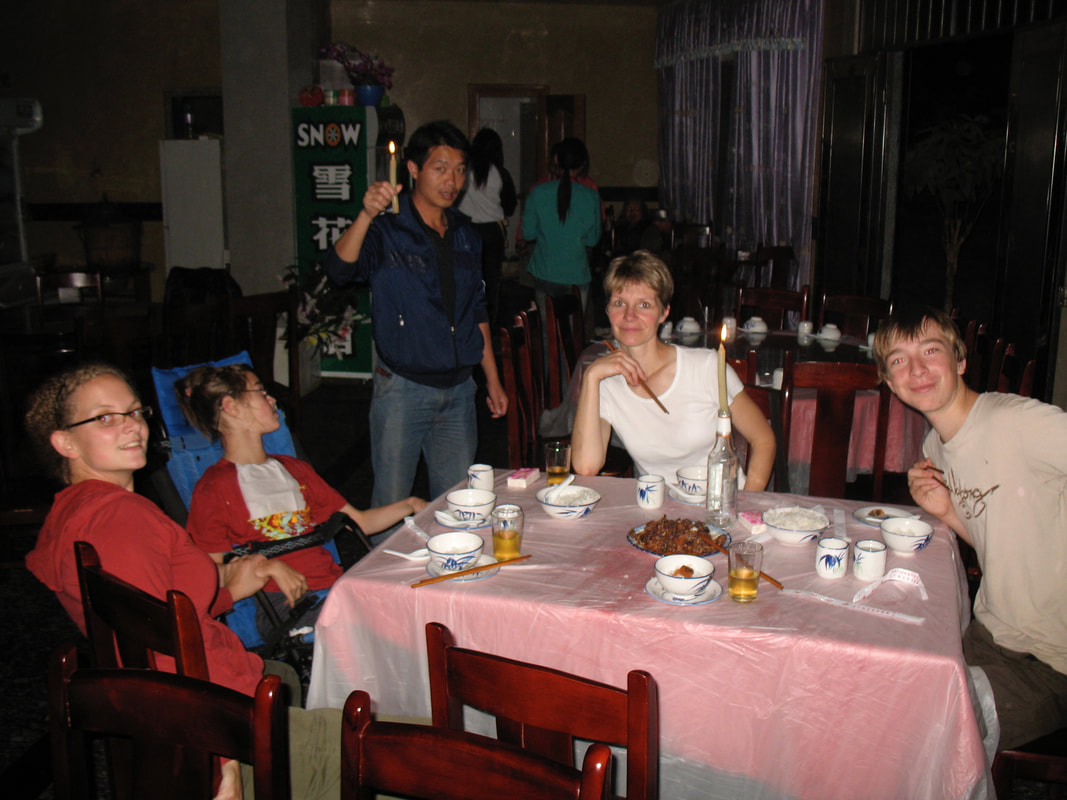
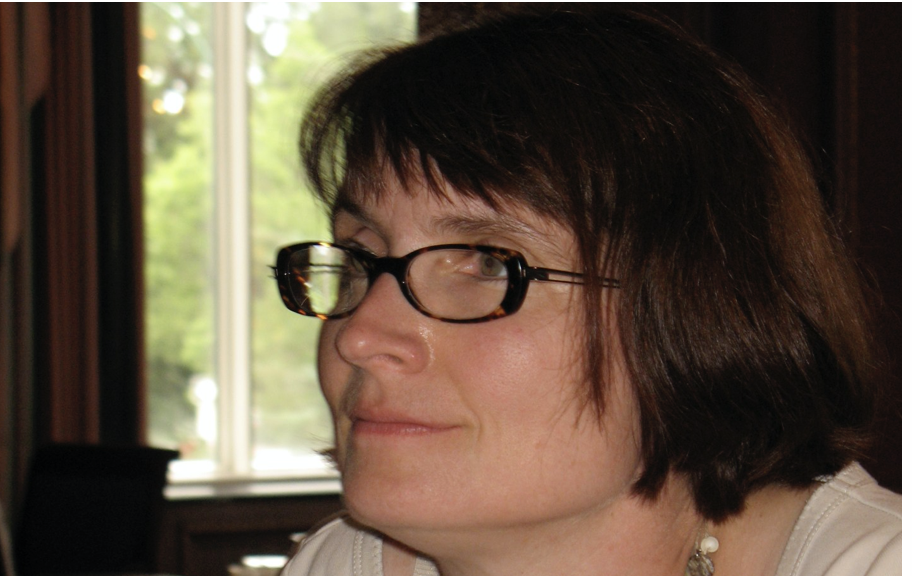
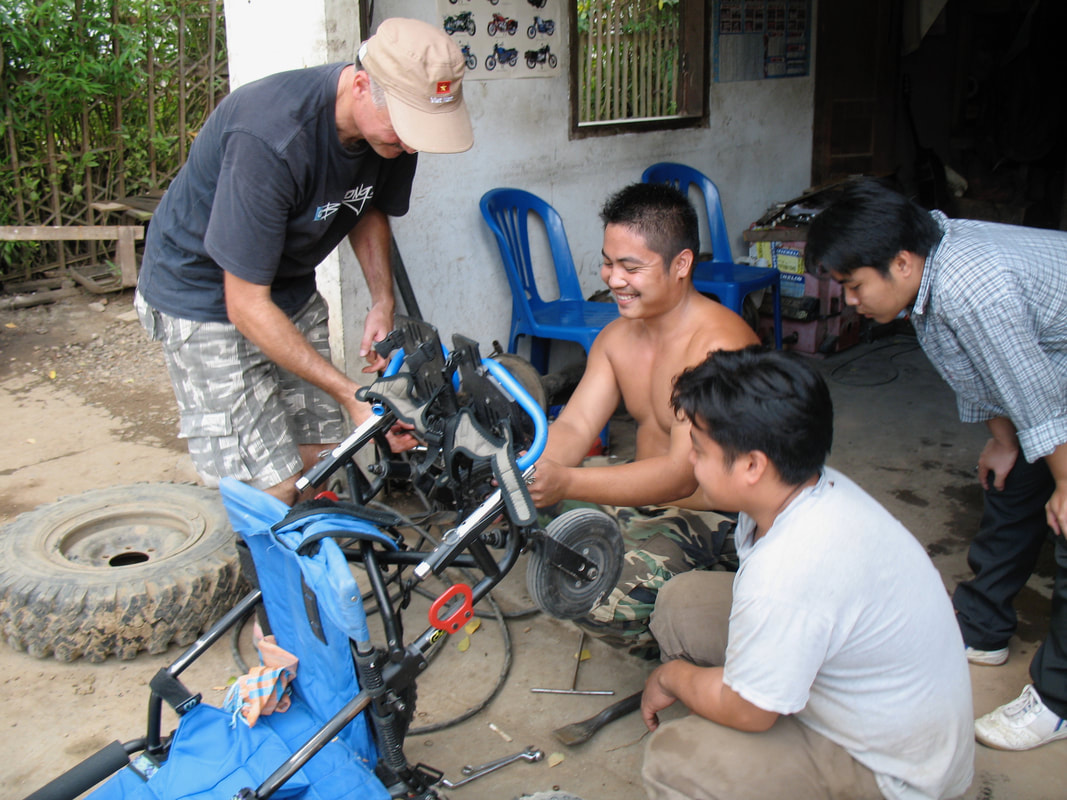
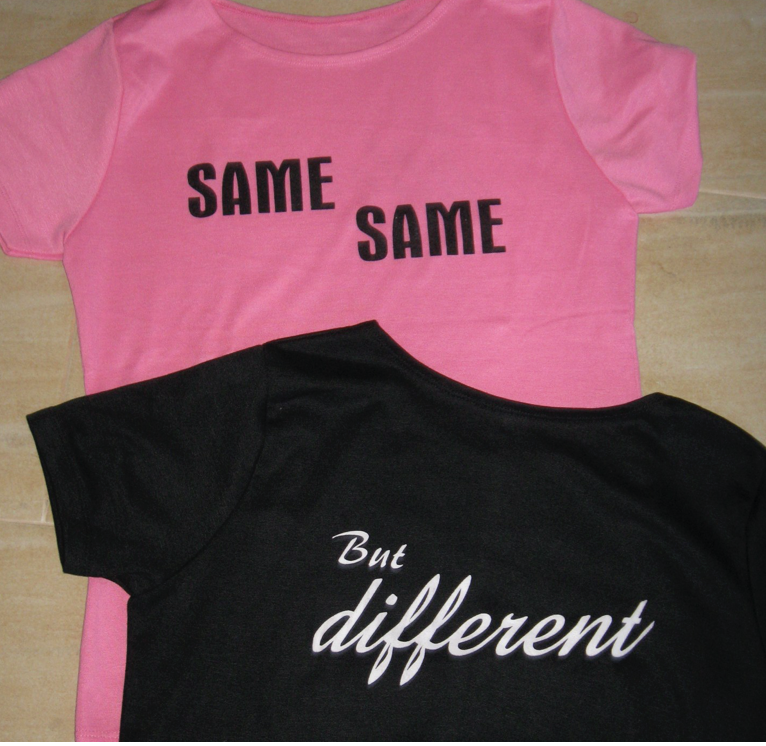
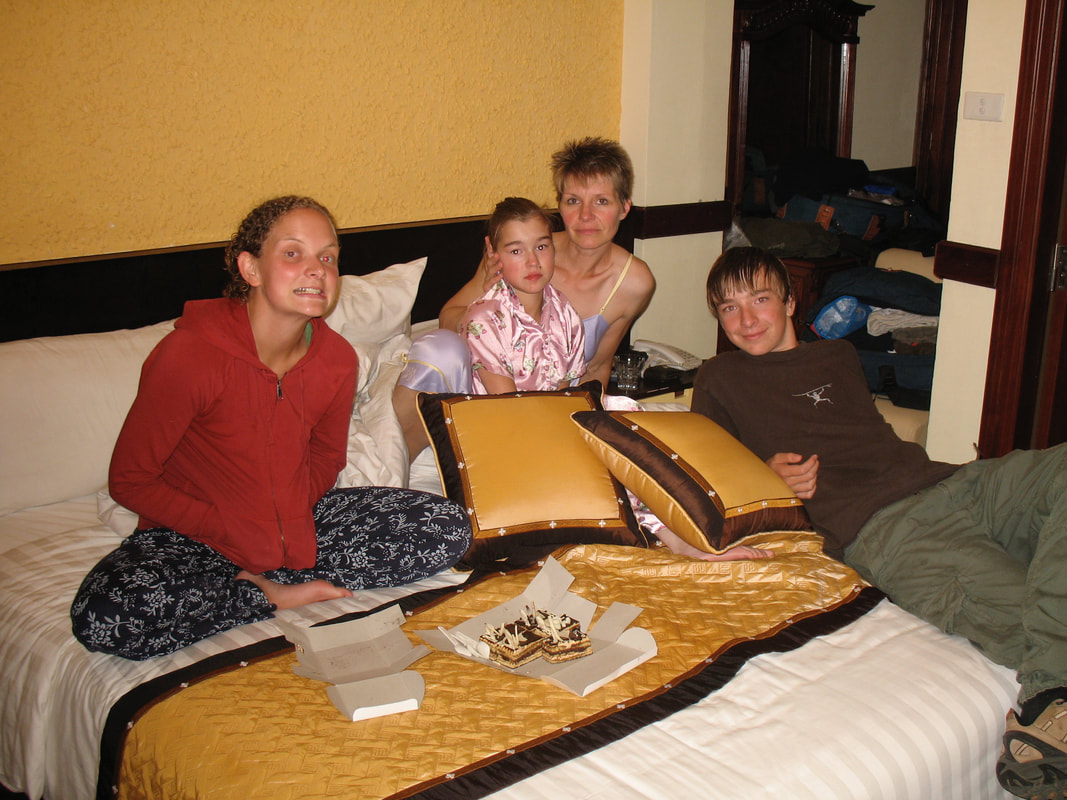
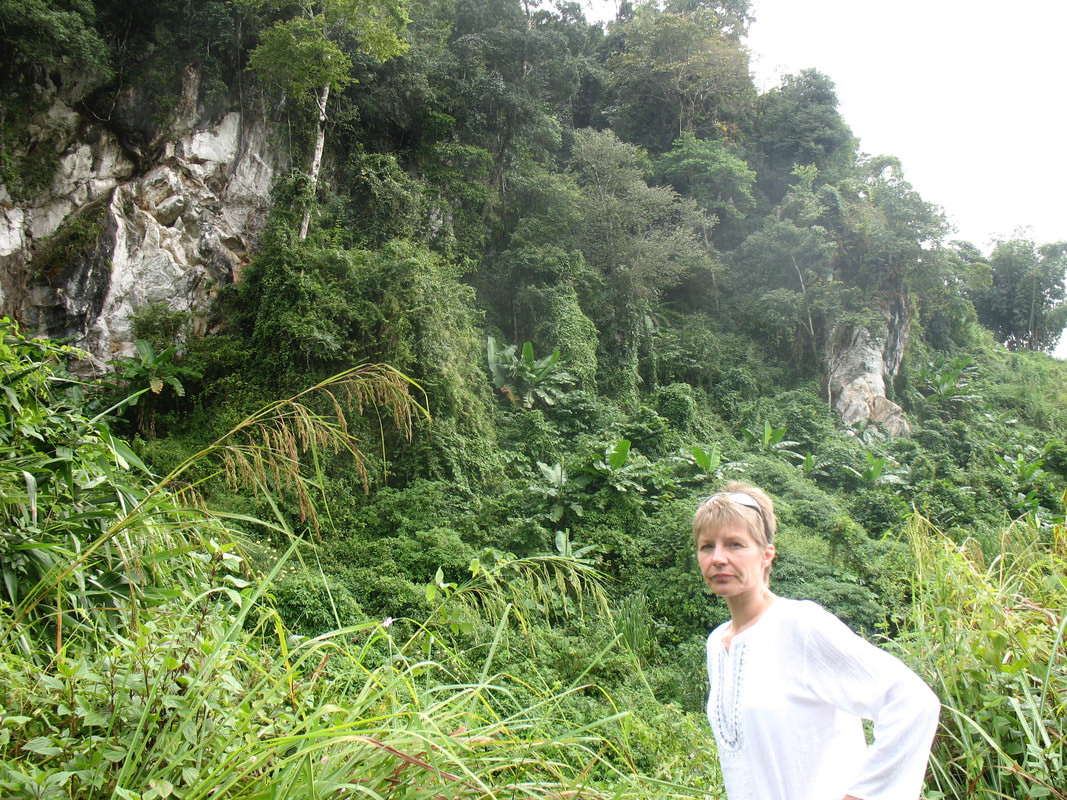
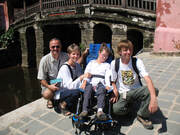
 RSS Feed
RSS Feed
